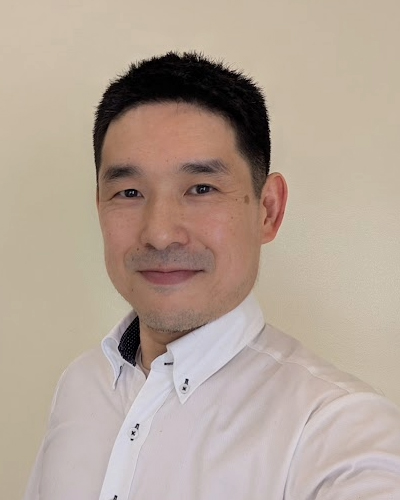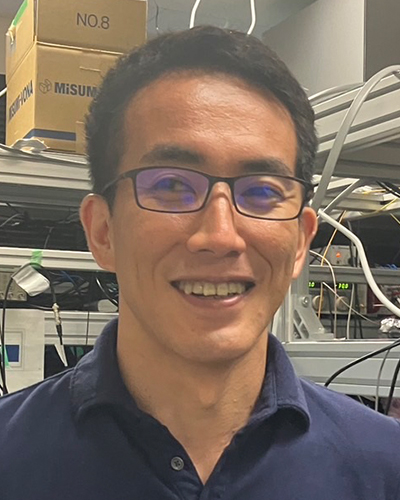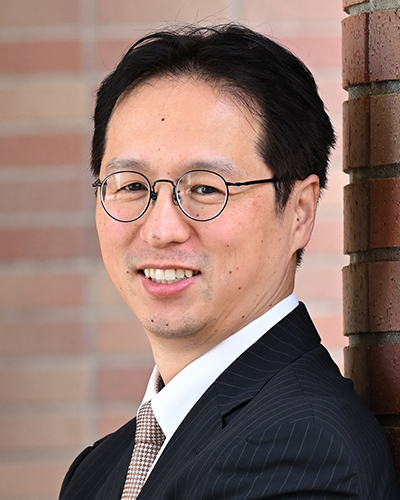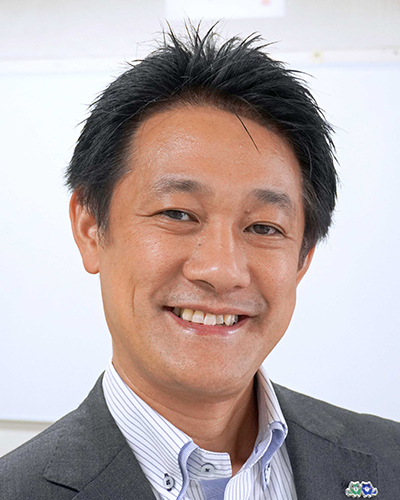Electronic and photonic computing systems are now facing severe performance bottlenecks caused by the slowdown of Moore’s Law and the limitations of electrical interconnects. As data traffic and computational demands increase exponentially, it has become essential to explore photonic approaches that can process and transmit information with extremely low latency and energy consumption. Among these, microresonator frequency combs, also known as microcombs, have emerged as one of the most promising technologies that bridge optical communication, optical signal processing, and terahertz (THz) wireless communication.
A microresonator frequency comb is a set of discrete, equally spaced optical lines generated through parametric four-wave mixing (FWM) inside a high-Q microcavity. When a continuous-wave (CW) laser pumps the cavity, the optical Kerr nonlinearity induces energy transfer between modes separated by the cavity’s free spectral range (FSR), leading to cascaded sideband generation. Under proper dispersion and pump conditions, these sidebands evolve into dissipative Kerr solitons (DKS), forming a phase-locked frequency comb. The Lugiato-Lefever equation (LLE) accurately models the dynamics of a nonlinear Schrödinger-type mean-field equation that incorporates dispersion, detuning, and cavity losses. Stable soliton formation requires a careful balance between group-velocity dispersion (GVD) and the nonlinear phase shift, which is achieved through precise dispersion engineering in materials such as Si3N4, AlGaAs, and MgF2.
In recent years, dispersion control techniques such as waveguide geometry optimization, coupled-resonator design, and avoided-mode-crossing engineering have enabled the development of broadband, low-noise microcombs with high conversion efficiency. Two distinct regimes, bright soliton combs in anomalous dispersion and dark-pulse combs in normal dispersion, offer complementary benefits. Bright solitons offer clean spectral coherence, whereas dark-pulse combs provide higher pump-to-comb efficiency, which is crucial for on-chip integration. The development of perfect soliton crystals, where multiple solitons are equally spaced within the cavity, has further stabilized the spectral envelope and improved reproducibility across devices.
Microcombs are uniquely suited as multi-wavelength optical sources for massively parallel transmission. Each comb line can act as an individual optical carrier, enabling dense wavelength-division multiplexing (WDM) with a single laser pump. In recent experiments at Keio University’s Yagami and K2 campuses, we employed Si3N4 microcombs as the optical source for low-latency IMDD (Intensity-Modulation Direct-Detection) fiber links. The system simultaneously modulated multiple C-band channels without requiring coherent detection or error correction. By utilizing hundreds of stable wavelengths from a single microcomb, we demonstrated error-free (BER < 10-9) data transmission with drastically reduced latency compared with conventional digital coherent optical links. These results establish a bus-free, analog-style optical link architecture that is particularly promising for intra-data center and short-reach applications, where latency and power consumption are dominant.
In parallel, microcombs are being explored as ultra-low-phase-noise photonic oscillators for terahertz (THz) wireless communications. When adjacent comb lines beat in a photomixer, they generate a stable sub-THz carrier whose frequency corresponds to the comb spacing. By leveraging the optical coherence of the pump laser and the high-Q cavity stability, the resulting THz carrier inherits an exceptionally low phase noise, reaching approximately –90 dBc/Hz at 10 kHz offset for 300 GHz oscillations. This level of stability surpasses that of most electronic oscillators, enabling the realization of high-quality QPSK transmission with clear constellations and a low error vector magnitude (EVM). Such photonic THz sources are ideal for high-speed, short-range wireless links and optical-to-wireless gateways.
To further enhance the modulation capacity, we recently conducted a quantitative analysis of phase-noise tolerance for high-order M-QAM transmission in the 300 GHz band. By reconstructing phase noise from measured oscillator spectra and embedding it into a single-carrier (SC) M-QAM link model, we clarified the relationship between oscillator noise and bit-error rate (BER). Two main distortion mechanisms were identified: common phase error (CPE), which can be removed mainly through phase-locked loop (PLL) carrier recovery, and instantaneous phase jitter, which remains as the dominant residual error. Using the 3σ error criterion derived from the root-mean-square error vector magnitude (RMS-EVM), we quantitatively define the tolerance boundary of phase noise for reliable high-order QAM. The results indicate that 16-, 32-, 64-, and 128-QAM require white phase-noise standard deviations below 105, 68, 42, and 19 mrad, respectively, to achieve BER < 10-9. Significantly, the measured phase noise of our Si3N4 microcomb oscillator falls within this tolerance region, demonstrating its feasibility for future 64-QAM and 128-QAM THz systems.
These findings highlight the synergy between optical communication and wireless photonics. The same microcomb platform can simultaneously serve as a multi-wavelength optical transmitter for fiber links and as a coherent THz oscillator for wireless transceivers. Such integration opens a new direction toward hybrid optical–THz systems that directly bridge fiber and free space, offering seamless conversion between optical computation, data transmission, and wireless broadcasting. Moreover, the low-noise microcomb enables analog photonic processing and photonic tensor cores, where optical convolution or matrix multiplication can be performed and transmitted in real-time via THz carriers. This vision integrates photonic computing and wireless communication within a single, low-latency, and energy-efficient framework.
In the latter part of this tutorial, we will also discuss dispersion design strategies for high-repetition-rate microcombs, Si3N4-Si heterogeneous integration for compact modulators, and noise transfer mechanisms from the optical to the THz domain. The session will conclude with perspectives on scalable photonic architectures that utilize microcombs for parallel signal generation, low-latency analog links, and low-phase-noise THz transmission. By integrating optical and wireless functionalities into a chip-scale platform, microcombs serve as a cornerstone technology for next-generation photonic systems, enabling the seamless bridging of computation, communication, and sensing at unprecedented speeds.
Overall, this tutorial will guide participants from the fundamental physics of microcomb formation to the most recent implementations in optical and THz systems, emphasizing how microcombs can transform both wired and wireless communications through their unique combination of coherence, scalability, and ultra-low noise.
After attending this tutorial, participants will be able to:
1. Understand the principles of Kerr-microcomb generation and the governing nonlinear dynamics.
2. Explain how dispersion and mode-coupling engineering enable stable soliton and dark-pulse operation.
3. Identify the advantages of material platforms such as SiN and MgF2 for low-loss, broadband comb generation.
4. Apply microcombs as multi-wavelength sources for parallel IMDD optical links with sub-microsecond latency.
5. Analyze the performance of low-latency optical interconnects demonstrated between Keio Yagami and K2 campuses.
6. Understand the mechanism of photomixing adjacent comb lines to generate low-phase-noise THz carriers.
7. Distinguish experimental QPSK demonstrations from analytical 64-QAM phase-noise tolerance studies in 300-GHz systems.
8. Quantify the phase-noise limits (?42 mrad for 64-QAM) derived from 3σ-EVM criteria for reliable high-order modulation.
9. Envision how low-noise microcombs can unify optical processing, IMDD interconnects, and THz wireless links into a coherent, energy-efficient photonic platform.
10. Summary
He received his B.S. in Electronics and Electrical Engineering from Keio University, Yokohama, Japan, in March 2000, and his M.S. and Ph. Design Engineering from the same institution in September 2001 and March 2004, respectively.
On April 2004, he joined NTT Basic Research Laboratories, in Atsugi, Japan. On April 2010, he moved to Electronics and Electrical Engineering at Keio University, where he is currently a professor. He received Scientific American 50 Award in 2007, and the Commendation for Science and Technology by the Minister of Education, Culture, Sports, Science and Technology, The Young Scientists’ Prize in 2010. Dr. Tanabe is a Fellow of Optica, Senior Member of IEEE, and a member of SPIE. He is currently an Associate Editor for Photonics Research, AIP Advances and Scientific Reports. He is also serving as a conference committee member in various conferences, including the Program Chair for ALPS2026, and the Steering Committee Chair for ICNNQ2026.





